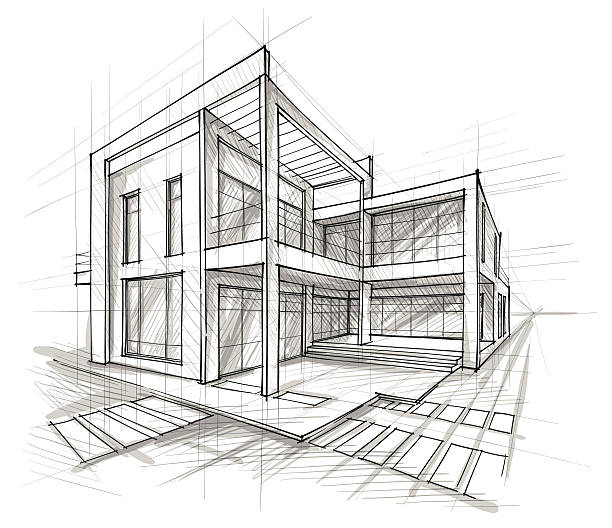The Influence of Technical Improvements on the Style Practices of Contemporary Architects
The fast advancement of technological devices has actually considerably improved the layout landscape for contemporary designers, cultivating unprecedented levels of technology and sustainability. Exploring these dynamics exposes a nuanced interaction in between technology and conventional style techniques, motivating a more detailed exam of what the future holds for building techniques.
Evolution of Architectural Equipment
Just how have building devices transformed the design and construction processes over the centuries? The development of architectural devices has actually dramatically influenced the effectiveness, accuracy, and imagination of design and construction.
With the introduction of the Renaissance, the introduction of the compass and the protractor noted a crucial change. These tools enabled engineers to attain higher accuracy in their designs, facilitating the appearance of even more elaborate and proportionate structures. The Industrial Transformation further changed building experiment the introduction of mechanical tools and materials, enabling larger and more enthusiastic projects.
In the 20th century, the growth of computer-aided layout (CAD) software application transformed the landscape as soon as again, offering engineers with unmatched capabilities in modeling and visualization. Today, progressed tools such as Structure Information Modeling (BIM) and parametric layout software application proceed to push the borders of architectural innovation, allowing a more integrated strategy to style and building and construction processes.
Boosted Collaboration in Style
As technology continues to advance, enhanced partnership in style has become a keystone of modern building technique. The integration of digital tools such as Building Details Modeling (BIM), cloud-based systems, and progressed visualization software application has actually changed the way engineers, engineers, and stakeholders engage throughout the layout process. These tools promote real-time interaction, allowing teams to share concepts, alterations, and feedback instantaneously, regardless of geographical place.

Additionally, interdisciplinary collaboration has actually been structured with these technological developments, enabling architects to work extra very closely with various other professionals, such as urban organizers and environmental consultants. The outcome is an extra cohesive technique to design that thinks about numerous perspectives and know-how. Inevitably, improved collaboration in layout is not simply a trend; it is crucial for producing innovative, useful, and cosmetically pleasing style in a progressively intricate globe.
Sustainability With Modern Technology
Sustainability in design has significantly become intertwined with technical innovation, driving the market towards eco responsible methods - cda architects. Contemporary engineers are leveraging advanced innovations to decrease environmental impact while improving the efficiency of structures. One prominent example is the use of Structure Details Modeling (BIM), which allows for accurate preparation and source appropriation, reducing waste during building and promoting energy effectiveness throughout a structure's lifecycle
In addition, smart materials and energy-efficient systems are being integrated into designs to optimize resource usage. Technologies such as solar batteries and eco-friendly roof harness eco-friendly view publisher site power resources, adding to minimized carbon impacts. Furthermore, the application of man-made knowledge in style processes allows designers to mimic and evaluate energy consumption, guiding decisions towards even more sustainable results.
The combination of sustainable technologies not just straightens with international environmental goals but additionally fulfills an increasing need from customers for green options. As designers embrace these innovations, the emphasis moves towards creating spaces that are not just cosmetically pleasing however likewise functionally lasting, consequently redefining the standards of modern style. In this method, technology acts as a driver for sustainability, enabling engineers to create buildings that regard and enhance the native environment.
Challenges in Execution
While technical improvements in architecture hold wonderful pledge for enhancing sustainability, their execution frequently runs into considerable challenges - cda architects. One main obstacle is the high knowing contour connected with brand-new technologies. Designers and construction experts might require considerable training to successfully make use of sophisticated software program and tools, which can delay task timelines and enhance expenses
In addition, the integration of arising technologies, such as Building Details Modeling (BIM) and sustainable materials, commonly necessitates partnership throughout multidisciplinary groups. This collaboration can be impeded by distinctions in know-how, operations, and communication styles, causing possible conflicts and inefficiencies.
Financial restrictions better make complex the adoption of ingenious innovations. Several special info building companies, particularly smaller ones, may lack the resources to purchase sophisticated tools, limiting their ability to take on larger firms that can afford such investments.
Furthermore, regulative structures and building ordinance may not keep speed with technical innovations, creating uncertainty and prospective conformity problems. This difficulty can inhibit architects from completely embracing brand-new modern technologies, as the threat of non-compliance may exceed the advantages. For that reason, dealing with these application difficulties is essential for the successful integration of technical innovations in modern architectural practices.
Future Trends in Style
The difficulties connected with the implementation of brand-new innovations in architecture have actually triggered a reevaluation of future trends within the market. As engineers navigate issues such as sustainability, urbanization, and social equity, they are significantly embracing innovative modern technologies to enhance design effectiveness and environmental efficiency.
One popular trend is the assimilation of expert system (AI) in the style process. AI devices can analyze substantial datasets to inform layout choices, improving both creativity and functionality. view publisher site Likewise, Structure Info Modeling (BIM) proceeds to progress, allowing real-time collaboration amongst stakeholders and facilitating structured project administration.
Sustainable style techniques are also getting energy, with designers concentrating on flexible reuse and regenerative design concepts that decrease resource consumption and waste. The consolidation of clever materials and renewable energy resources will certainly even more boost the strength of buildings in the face of climate modification.

Conclusion
Technological advancements have significantly improved building style practices, facilitating boosted accuracy, partnership, and sustainability. The integration of devices such as Structure Info Modeling and parametric design software, along with man-made intelligence and smart products, equips architects to resolve complicated challenges better. While execution may present specific obstacles, the ongoing development of these technologies guarantees to drive development in style. Future patterns will likely even more stress sustainability and effectiveness, ultimately redefining the constructed environment.